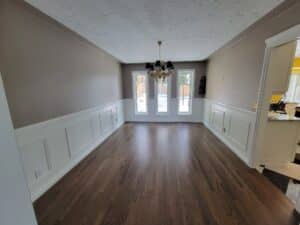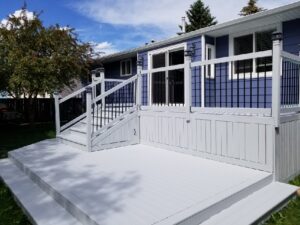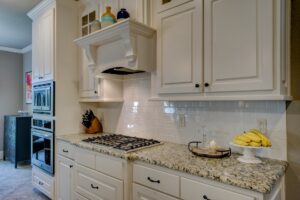By Frank Mosquera
Interior & Exterior Painting specialist.

For any project to be successful, correct estimates of the total cost of the project must be made before it is even started. The same rule applies to commercial painting just as much as it does other projects. It is therefore expected that professional painters will be able to come up with all the expected costs to be incurred by labor, raw materials, equipment, and other necessities.
However, the estimates must be flexible enough to accommodate modifications. Knowing how to estimate the expected cost of a commercial painting job is a skill required of both professional painters and their customers. For building owners, knowing how to estimate the possible cost of a commercial painting job would easily help them be aware of cost trends and help them avoid being overcharged for services.
Table of Contents
ToggleCalculate the size of the area
One sure way of calculating the estimate of a painting job is through the size of the building or space to be painted. When you’re trying to arrive at the total size just to be able to know how much paint is needed, you need to multiply the height and the width of the expected areas and to add all of them together to know the total size in square feet. For example, if the building to be painted has a room with walls 40 feet wide and 50 feet high. The total size for that room would be 4 x 40 x 50 provided that the walls are all equal. If the same room has one window 5 feet wide and 7 feet high and also, a door that’s 10 feet high and 7 feet wide, the total area left to be painted would be 2000 – ( 35 + 70) which is equal to 1895 square feet. When you have such measurements available, it becomes easy to predict exactly how much paint the project at hand is going to require.
Get the cost of paint
The painting profession requires you to know the required amount of paint sufficient to paint a specified area in square feet. The amount of paint needed to cover a wall could also depend on several factors. For example, more paint is needed to cover a textured wall than a smooth wall. Also, the number of coats needed for a perfect layer of paint to be achieved also matters. Some situations require two coats of paint for perfection to be achieved and hence double the amount of paint needed to paint another case that requires just one coat. One great hack to this is to lower the expected coverage per square foot for one bucket of paint and to multiply by 2 or 3 depending on the number of coats required to complete the painting. This way, you are sure to never run out of paint midway into the job. While you calculate the cost of paint, you must also include the cost of items like brushes, rollers, and others. The cost for these items varies with time and place, so you must make your findings concerning your local area.
Cost of labor
The widely accepted way of calculating the labor cost for a painting contractor is to first arrive at the expected number of hours required to complete the job. When you have an idea of the time it takes to finish the job. You can easily arrive at labor cost per head by multiplying the agreed pay per hour by the expected time. One important detail to remember is that the workers won’t be painting all the time they are on the job. They are also going to have to prepare the walls for painting in any way possible. Some of these activities include scraping, washing, caulking and priming, and the cleanup process after the painting is done. All of these must be considered and the expected time must be added to the estimates for accuracy.
The current condition of the building
Even though it would have made sense for all instances of a commercial paint job to be easy to estimate due to low-varying conditions in the buildings, it is not so. Certain attributes of a building can lead to a likely increase in the overall cost of painting. There are many examples of conditions that could lead to a possible increase in the cost of painting. The height of a building or the complexity of the inner or outer architecture may lead to an increase in the difficulty with which the painters get their job done. And when the job becomes difficult to do, it is only natural that more money is requested for the execution of the project. Also, buildings with textured walls cost more to paint than buildings with smooth walls as the former is harder to paint than the latter. Other factors that are barely regarded as important may also come into play. If, for example, a building contains furniture or machines that need a lot of power to be moved around, it will significantly increase the working hours and attract more cost.
All these go to show that commercial painting can come with a lot of costs that may seem out of place at first look, but the earlier you understand this and prepare ahead, the better for you.









